
Ernie Barnes was an African American professional athlete and painter. Born on July 15, 1938, in Durham, North Carolina; during the Jim Crow Era.
At an early age, Mr Barnes took interest in art books and classical music as a result of the encouragement received from his mother Fannie Mae Geer.
By the time, Ernie was enrolled in junior high school, he was able to decrypt many of the honorable masterpieces residing within the walls of conventional museums. Sadly, many years would pass by, before Mr. Barnes was allowed access into the very museums he valued due to segregation laws during that time.
While in high school, Mr. Barnes found solace in sketch drawings due to being bullied and taunted by classmates; as a result of his non athletic stature. It was during this time, Ernie developed a close friendship and bond with his high school’s masonry teacher named Tommy Tucker.
Tommy Tucker, a former athlete and weight lifting coach, became intrigued by Ernie’s drawings. Tucker began to share his own personal journey with bodybuilding, and also his perspective on life.
This moment like many others to follow would help mold Ernie into the disciplined and dedicated athlete and painter he would become later in life.
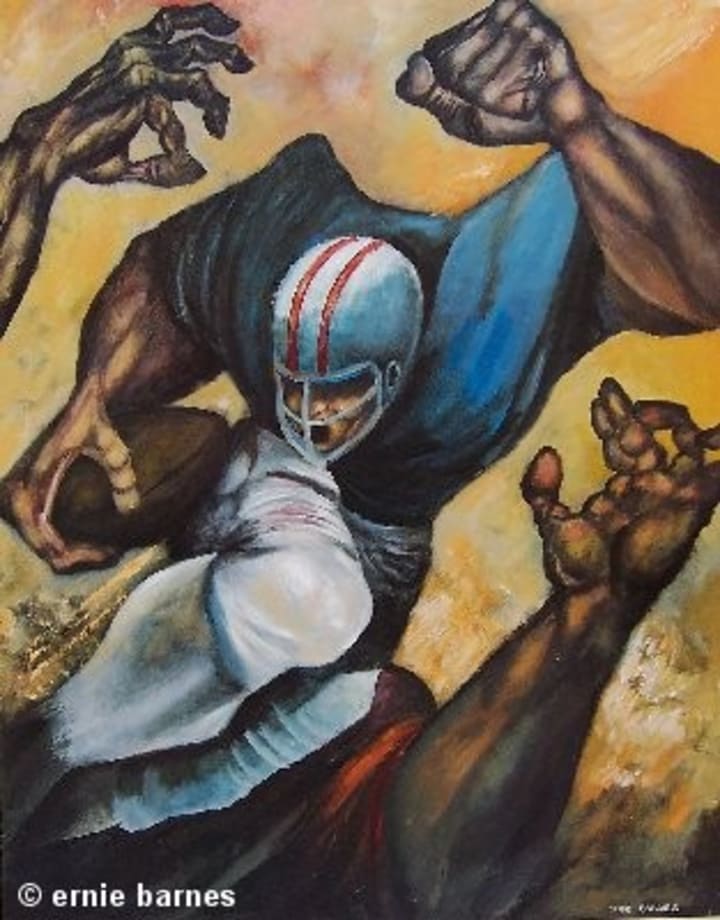
Featured in Ernie Barnes 1995 autobiography,"From Pads to Palette,”exposing his transition from player to artist.
At age eighteen, Ernie attended a college art field trip to the newly-desegregated North Carolina Museum of Art. During the tour, Ernie was intrigued to explore “paintings by negro artists.” A member of the teaching staff at the Museum of Art in Raleigh indicated “Your people don’t express themselves that way.” In CONTRAST, Barnes returned to the Museum of Art in 1979, for a solo exhibition. Twenty-three years to the day, a staff declared that distasteful “indication,” regarding black people, culture, and art.
Ernie had a very fruitful professional athlete career playing with various teams such as the Baltimore Colts (1959-60), Titans of New York (1960), San Diego Chargers (1960-1962), Denver Broncos (1963-1964), Canadian Football League (1965). Unfortunately, in 1965, during a game with the Saskatchewan Roughriders; Ernie fractured his right foot abruptly ending his football career.

Ernie Barnes playing for the San Diego Chargers between 1960 and 1962.
Shortly after his final football game, Barnes attended an owners meeting in 1965. In high confidence of becoming the football’s league official artist, Unbeknownst to Ernie, he would initiate his true calling as a historical and well-known artist, and painter.
It was during this meeting, Ernie became acquainted with New York Jets owner Sonny Werblin. Mr. Werblin became fascinated by Ernie and his art. In return, Werblin financed Ernie’s art to be transferred and assessed in New York, unbeknownst to Ernie, by three art critics.
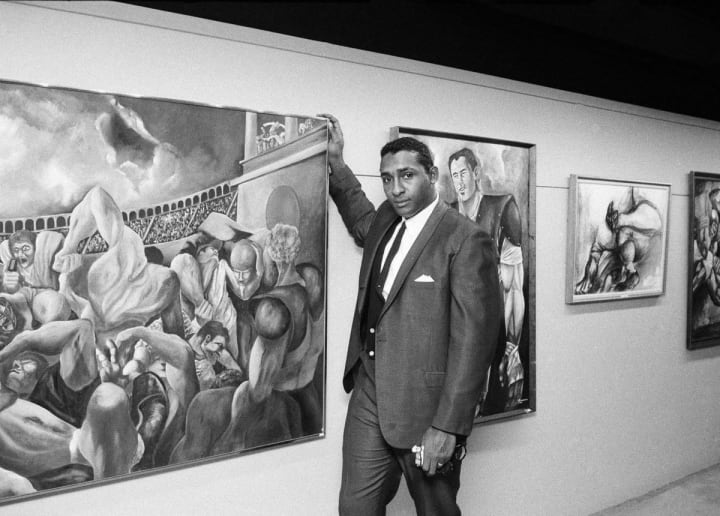
Following the assessment of Ernie’s art, the art critics articulated to Mr. Werblin expressing great admiration for Ernie’s art. The art critics declared Ernie as, “the most expressive painter of sports since George Bellows.”

Referred to as an,” undoubtedly an unusual post in the history of the NFL, “ Sonny continued to enlist Ernie as a salaried athlete, but stationed in front of a canvas rather than a football field. Werblin than proclaimed to Barnes “You have more value to the country as an artist than as a football player.”
Soon after, Mr.Barnes unveiled a debut solo exhibition in November of 1966. Mr. Werblin introduced Ernie’s solo exhibition at the Grand Central Art Galleries in New York City. Ernie’s solo exhibition was deemed critically-acclaimed resulting in the selling of all the paintings showcased.
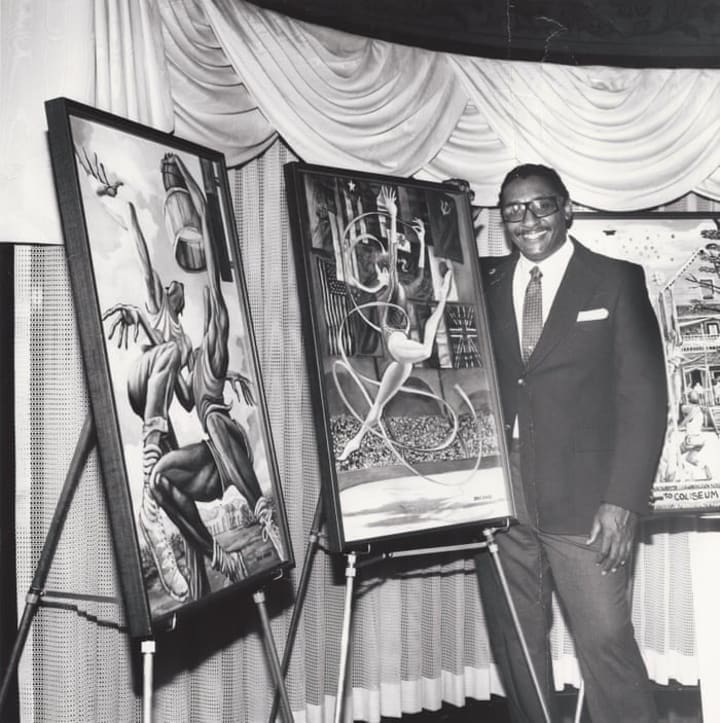
Encouraged by his Art instructor Ed Wilson during his college years to begin painting from his own life experiences , Ernie was a firm believer in the notion of not being blind to another person’s humanity. He chose to create paintings that exposed “The Beauty of The Ghetto,” a title deprived from his 1971 exhibition. This exhibition was in response to the 1960’s cultural movement of “Black is Beautiful, and also James Brown’s single”Say it loud, I am BLACK and PROUD.”
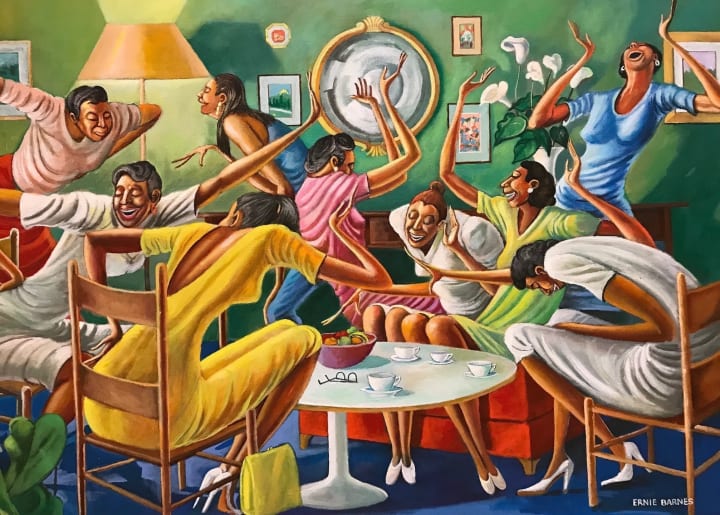
ERNIE BARNES, Detail of “Room Full A’Sistahs,” 1994 . Depicts a living room with several African-American women laughing joyfully.
In the early 1970’s, Barnes continued to gain international exposure with the creation of “The Sugar Shack,” painting; which appeared as an album cover for Marvin Gaye’s 1976 “I Want You,” album, and also appeared on the 1974 television series,”Good Times.”
Ernie’s inspiration for the Sugar Shack painting was deprived from his childhood memories, and experiences. During a 2008 interview Ernie recalled not being able ,”to go to a dance.”Barnes also indicated,” The Sugar Shack” is a recall of a childhood experience.” It was the first time my innocence met with the sins of dance. The painting transmits rhythm so the experience is re-created in the person viewing it. To show that African-Americans utilize rhythm as a way of resolving physical tension.”
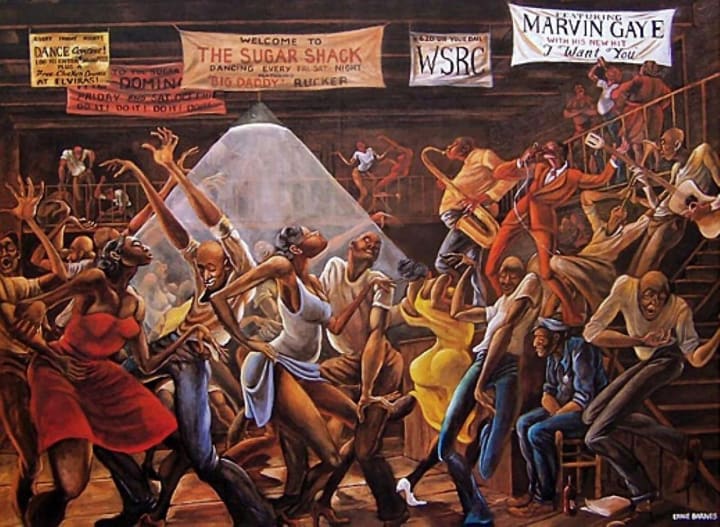
Ernie added the Marvin Gaye banner to the original painting to promote Gaye’s new album “I Want You,” also released as an album cover on March 1976 by Motown Records.
Blessings, Peace, and Prosperity to the family and friends of Ernie Barnes. Thank you Ernie Barnes for continuing to seek knowledge, and education while using your platform to expose Black Art and Black Artists despite the racist and systematic laws set in place against the African American People, Culture, and Art.
Rest In Peace KING.

“The artist who is useful to America is one who studies his own life and records it through the medium of art, manners and customs of his own experiences.”Ernie Barnes
Thank you for reading! If you enjoyed what you have read, it would be greatly appreciated if you would leave a TIP! Thank you for hearing my voice
QUEENIE•BLACK


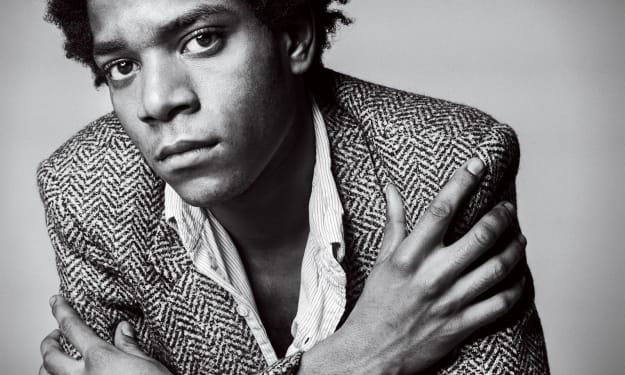

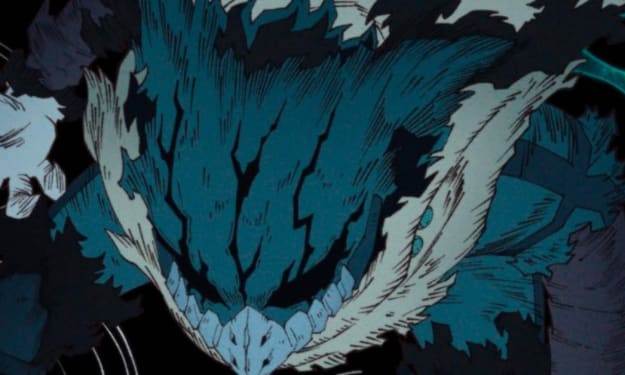

Comments
There are no comments for this story
Be the first to respond and start the conversation.